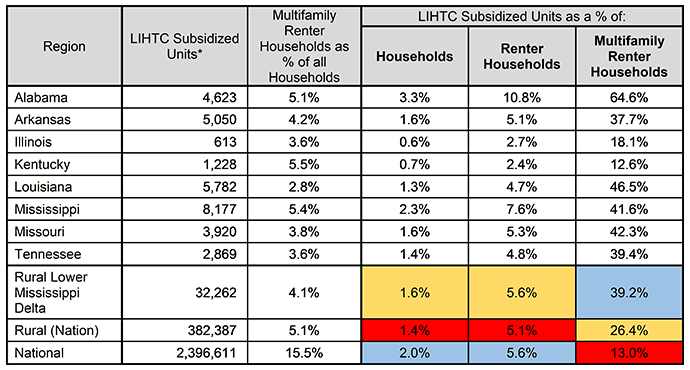LIHTC in Rural Lower Mississippi Delta
The Lower Mississippi Delta has a unique history that has had a profound social and economic impact on the entire nation. From being the birthplace of jazz and blues to the region's status as one of the nation's most important agricultural resources, the Delta's influence has extended far beyond its borders. Despite this, the rural areas in the Lower Mississippi Delta have the distinction of being one of the most underserved housing markets in the country.
Today, 5.2 million people live in the rural parts of the Delta region, which runs along the Mississippi River and includes portions of eight states between Illinois and Louisiana. While this region has played an integral role in the development of our nation, it has also been characterized by economic difficulties, racial tensions and high levels of poverty for much of its history.
Providing affordable, adequate housing anywhere in the nation is a challenge. However, difficulties are felt more acutely in the rural Lower Mississippi Delta, where incomes are often too low to generate enough rental revenue to make even subsidized housing feasible, and where government and economic incentives often do not support sufficient housing development. To help illustrate this, the figure below highlights the prevalence of LIHTC in the Lower Mississippi Delta market. Learn more.

Sources: Freddie Mac Tabulations of 2017 5-Year American Community Survey and the National Housing Preservation Database. Shading is based on LIHTC prevalence. Blue shading indicates that the number of a relatively high percentage of LIHTC units are available for the given population (e.g., Renter Households). Red shading indicates that relatively few LIHTC units exist for the population.
* LIHTC Subsidized Units only includes units in multifamily properties (5+ units). There are LIHTC units that are in properties with fewer units, but they are very uncommon and not the focus of this paper.